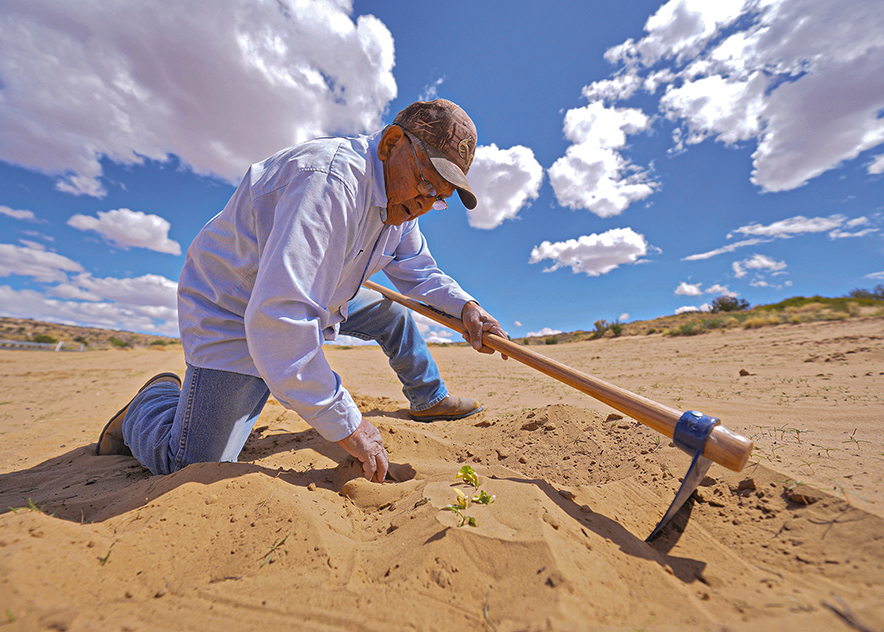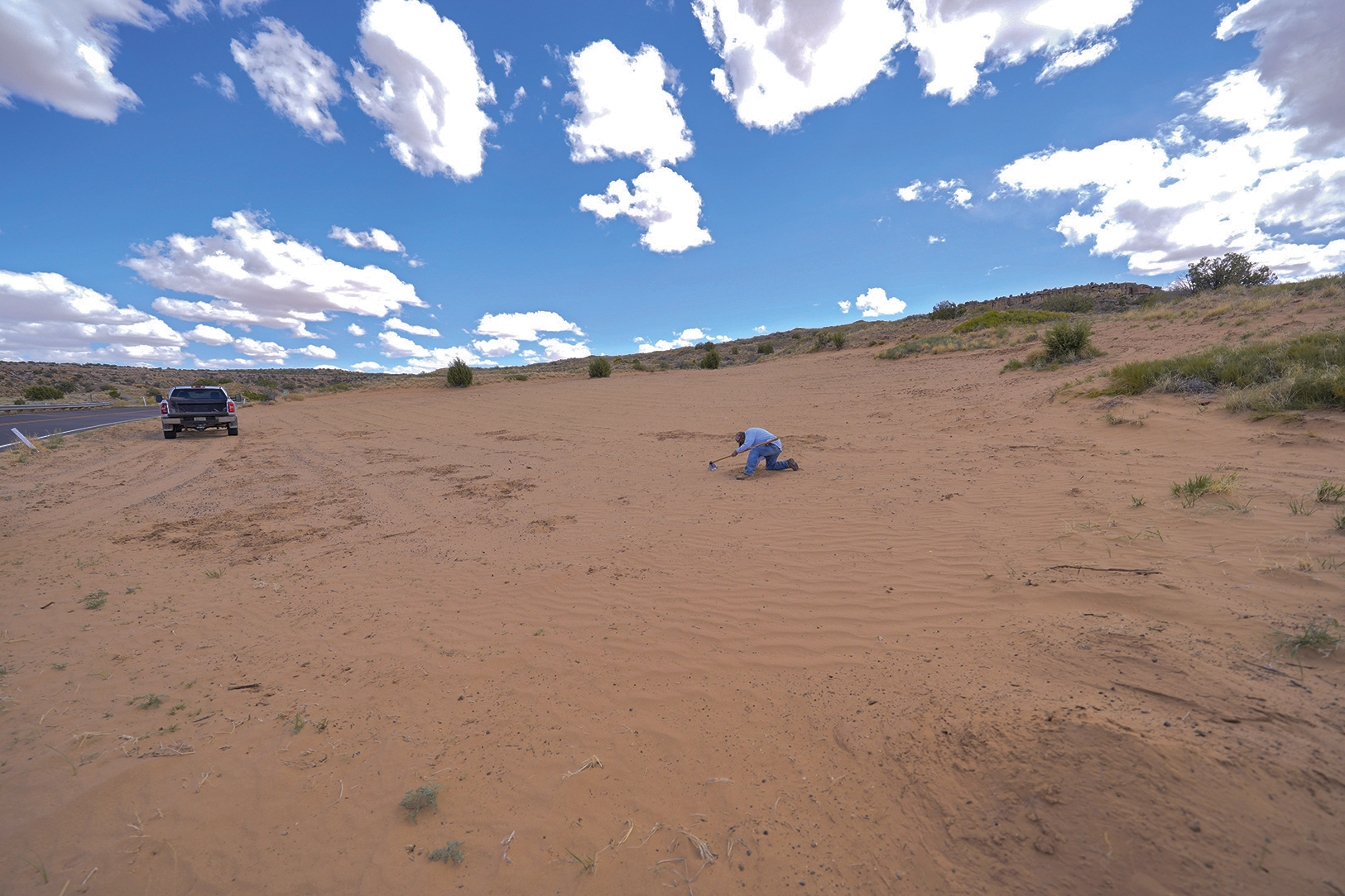
‘The ground is tired’ Hopi farmer battles drought, wind, and time

Special to the Times | Donovan Quintero
With steady hands, Hopi farmer Wayne Monongye, 75, worked the parched soil, gently coaxing life from a patch of dry earth, a quiet act of resilience in a land long shaped by drought and determination.
HOTEVILLA, Ariz.
Under a vast blue sky streaked with spring clouds, 75-year-old Hopi farmer Wayne Monongye kneels in the sand, gently coaxing life from a patch of dry earth.

Special to the Times | Donovan Quintero
Hopi farmer Wayne Monongye, 75, tends to the parched soil with practiced care, continuing a tradition rooted in generations of dryland farming.
In his weathered hands, he holds a small bean sprout – one of many he had painstakingly planted across a sunbaked field surrounded by the encroaching silence of the desert. Beside him lies a curved hoe, its wooden handle worn smooth from years of use. The earth stretched out behind him, flat and tan, whipped by relentless winds.
“All the animals down to the worms are thirsty,” Monongye said, pushing back his cap to wipe the dust from his brow. “So they go for the young ones, the new ones.”

Special to the Times | Donovan Quintero
Hopi farmer Wayne Monongye, 75, shapes a protective ring of soil around a young plant, a method passed down through generations of dryland farming.
He explains that each planting season, caterpillars and grubs burrow through the soil in search of moisture, destroying the fragile shoots struggling to survive.
Monongye carefully clears sand that had nearly buried his young crops after recent wind gusts reaching 60 miles per hour. As he removes the sand, he searches for the white grub worms that threaten his bean plants. Around him, sparse green sprouts – some already yellowing – poked through the sandy crust. Tiny weeds, which Monongye said “suck up the last bit of moisture in the ground” cling close by.
Scenes like this are no longer rare. They are becoming the norm across the American Southwest, where topsoil moisture is declining, and drought conditions are increasingly severe.

Special to the Times | Donovan Quintero
Hopi farmer Wayne Monongye, 75, pauses to look out over his field as he works, his expression reflecting decades of experience on the land.
To read the full article, please see the May 22, 2025, edition of the Navajo Times.
Get instant access to this story by purchasing one of our many e-edition subscriptions HERE at our Navajo Times Store.








 Highway 264,
Highway 264, I-40, WB @ Winslow
I-40, WB @ Winslow